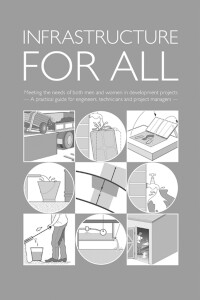-
Emergency sanitation: developing criteria for pit latrine lining
01.04.2016
Pit latrine linings for emergency sanitation facilities require different performance criteria from those for pits used in longer-term development work. Various international initiatives are currently under way to develop new methods of supporting the pits used for latrines in emergencies, but before a solution can be found, the problem needs to be defined. Current field guidance lacks the level of detail required by humanitarian workers to construct durable pits in a timely manner. Consultations with international humanitarian field staff and UK-based geotechnical engineers were used in this research project to identify design, construction, and operational requirements of emergency pit-lining systems. However, rather than closely defined performance requirements, the study identified a wide range of criteria that need to be considered and clear distinctions between emergency and longer-term solutions. Latrines constructed in the initial stages of emergencies are likely to be communal, with long rectangular pits that require frequent emptying. Current knowledge of suitable pit support methods is sufficient to provide a limited range of standard designs that could be selected to meet local requirements. -
Surface water in temporary humanitarian settlements
01.01.2017
In the Humanitarian Innovation Fund Gap Analysis for water, sanitation, and hygiene issues, field staff identified environmental management of surface water as an area of concern, although this was not reflected at a head office level. This difference of perspectives could be an under-reporting of this aspect of environmental sanitation to the global humanitarian community or a failure of experts to communicate the required response to surface water management in camps for displaced people. Reviewing core humanitarian engineering texts and global standards, this paper sets out the current state of the art and shows that there is a lack of clarity on the ‘ownership’ of the problem and the established responses are disjointed and poorly articulated, especially at field staff level. Since the core texts have been written, there has been a change in the way surface water is being managed in urban areas. Sustainable urban drainage practices may have potential in resource-poor but densely populated situations such as some refugee camps. The paper highlights the lack of adequate advice in both content and delivery mechanisms. More gaps and challenges were identified than solutions, but this research narrowed down the gaps identified in 2013 to more specific issues, which is a step further towards solving the problem.





